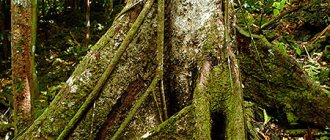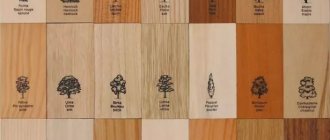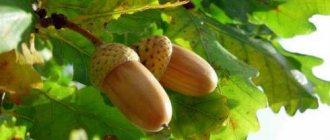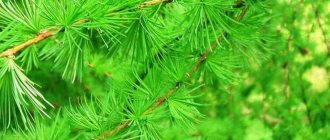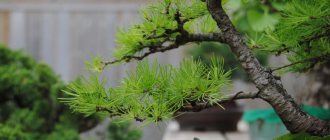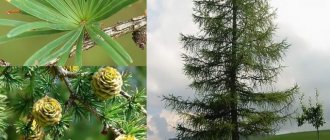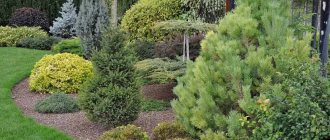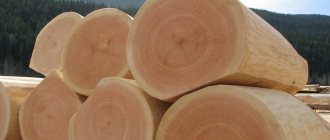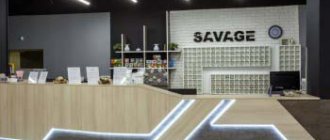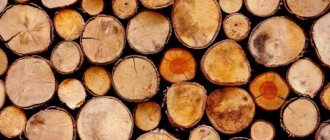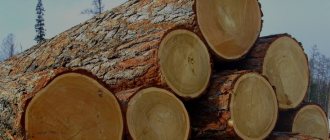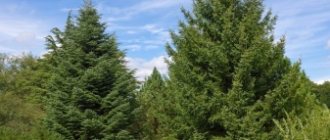Along with traditional fruit and ornamental crops, coniferous trees are often chosen to decorate plots. They not only look very attractive at any time of the year, but also purify the air and have a positive effect on the energy of the space. It’s not for nothing that people breathe well in a coniferous forest, and they want to transfer at least a part of it to their garden.
Coniferous wood in construction
There are more and more people wanting to build themselves a beautiful and durable wooden house every year. In order for the building to serve for a long time and remain as beautiful as on the first day, it is very important to choose the right lumber. The rocks used in construction have their own specifics: some are used only for interior work, others are resistant to precipitation and ultraviolet radiation, so they can be used on external walls and roofs. In this article we will look at the properties of softwood timber, which are most often used in construction: pine, fir, cedar and Siberian larch.
Comparison of the characteristics of larch with other wood species for construction and finishing
Wood has an ancient history of use in human economic activity. Wood is used to build houses or use it to make individual structural elements, make furniture, and create decorative crafts. More than 20% of financial costs in construction come from wood.
The prevalence of wood is due to its most valuable consumer properties:
- environmental friendliness;
- high strength;
- excellent heat-shielding properties;
- availability of material due to renewable resources.
Various types of wood species differ in their mechanical and physical properties, which mainly determines their scope of application. The differences are caused by the chemical composition and anatomical structure of the wood. For a specific type of work, wood with a set of specific performance characteristics is selected. The main criteria by which the choice is made include: wear resistance, ability to withstand mechanical deformation, strength. There is a close relationship between these characteristics and density. Density refers to the quantitative content of mass per unit volume of a material.
Considering the prospects for using materials from this point of view, we can distinguish 3 categories of wood:
- Soft – density up to 540 kg/m³;
- Solid – from 540 to 740 kg/m³;
- Very hard – more than 740 kg/m³.
Both coniferous and deciduous species are divided into categories based on hardness.
Most often, coniferous wood is used for construction needs, which includes larch. Its unique performance qualities place it among the most valuable tree species.
Pine
If you have recently walked through a pine forest, then you probably remember how beautiful the slender trunks rising to the sky look. The characteristics of pine lumber are considered ideal for the construction of both residential buildings and outbuildings. The density of pine wood is low: about 500 kg/m³. This means that inside the boards there is a significant number of pores that contain resinous substances.
The less dense the wood, the worse it conducts heat. Pine boards and logs hold temperature well, so the buildings maintain a comfortable temperature all year round. In summer, pine houses are much cooler than brick houses, and in winter they are warmer.
Pine lumber is quite soft and therefore very easy to process. If you want to decorate elements of the building with carvings, please do so. But this quality also has a downside: pine flooring is very easy to scratch with hard objects. So you will have to be careful when rearranging furniture.
An important advantage of pine is the low cost of lumber. Wood is ubiquitous and is considered a budget option for the construction of buildings. The advantages also include a pleasant forest aroma, which has a beneficial effect on the nervous, cardiovascular and respiratory systems.
In addition to softness, pine has another disadvantage: fire hazard. Because of this quality, it is necessarily impregnated with fire retardants, which does not have a very good effect on environmental friendliness. Treatment is also carried out against rot and insects - without this, the logs may suffer from pests.
In many ways it resembles pine. The hardness is slightly less (450 kg/m³), the wood is beautiful and quite durable. Spruce is used less often in construction than pine, although its characteristics are practically not inferior to it. Spruce wood has a beautiful pattern. Its resin content is slightly lower than that of pine. But the low resin content leads to rapid rotting of wood in a humid atmosphere. So it’s better to abandon the idea of decorating a bathhouse or bathroom with spruce boards - you’ll just waste your money. Of course, you can use impregnations, but it is much more profitable to simply take another coniferous species. Beautiful wood is often used to make furniture elements, finishing materials, and timber. But remember that the place where you ate was in dry and bright rooms.
Fir
Very few people study the characteristics of fir, since this tree is not often used in the construction of houses.
Soft and very light wood has a higher cost than pine or spruce. Practically does not dry out. Despite the fact that fir does an excellent job of insulating a house, it also has disadvantages. The main one is the minimum resin content, due to which boards and beams can begin to rot much earlier than other coniferous wood. The tree is quite tall, stretches up to 60 m, but it is hardly worth making rafters or load-bearing beams from it. But for home decoration, fir lumber is an excellent option. You can cut openwork shutters and trim from the boards.
Cedar wood has always been in high demand due to its simple processing, beautiful pattern and pleasant smell. Cedar log cabins are cozy, very warm and beautiful housing. Cedar wood is durable, although cedar lumber has a density of only 436-440 kilograms per cubic meter. In terms of bending strength and chipping along the fibers, cedar is better than pine and spruce.
Cedar is used for both construction and finishing of houses. The only thing that stops some customers is the high cost of this coniferous species. A cedar house will not be cheap, although it can last a long time: the wood contains resins that protect the fibers from dampness and other unfavorable factors.
Construction material
What is better as a building material - larch or pine? Many master builders know that larch is valued more than pine.
Pine is not very suitable for use in rooms with high air temperatures, for example in saunas and baths, due to the oiliness of the plant. In such places, you can get burned if the resin gets on your skin.
- medium wood hardness group (comparable to oak);
- good resistance to chips and impacts (produce high-quality parquet);
- durable and dense (sinks in water), less susceptible to rotting;
- good water resistance (used in exterior decoration of rooms with high humidity).
There are also some disadvantages. Due to the fact that larch wood is very dense, this creates problems during construction. Trees used to be floated down the river to their destination, and larch wood, due to its high density and heaviness, immediately sank to the bottom.
In any case, larch is a unique and expensive material.
Larch
Siberian larch is a record holder for a number of characteristics.
Firstly, it is considered the most durable and hardest of conifers. Its density is 680 kg/m³. Only oak and some exotic species are stronger than larch. Larch lumber has excellent moisture tolerance. This quality has made them indispensable in wet areas and for exterior decoration of the house. A ventilated facade made of larch will delight you for decades, and the lower crown of a larch frame will never have to be replaced due to rot.
The wood grain is very beautiful. Whatever lumber you choose for wall decoration, the interior will look luxurious. Block house, clapboard or plank can be tinted to give a beautiful shade, but this is not necessary. Larch is beautiful in itself and does not need much finishing.
The abundance of resinous substances does not allow the use of larch lumber when finishing the steam room. But wood does not require impregnation against insects. For treatment, only two types of products are usually used: fire retardants and coatings for ultraviolet protection.
In construction, not only density, porosity and ability to resist loads are important, but also the size of the tree. Larch lumber can reach 6 m in length. This means that you will not need to join the boards when finishing the facade or laying the floor.
The material can be considered universal. It is used in all major designs. The walls and roof, stairs, windows and doors, the floor in your house can be made from Siberian larch! You can find the sizes of standard lumber, their prices and other important details directly in the catalog.
Coniferous lumber. Advantages and disadvantages
Everyone knows that coniferous trees were widespread on our planet millions of years ago. After all, amber is nothing more than the petrified resin of these mighty relics. And today, tens of millions of coniferous trees form huge groves in all parts of the world, and wood is used by humans for almost the entire period of the existence of our civilization.
The most interesting thing, as experts from the Eurolining House company note, is that there is still no consensus on the advantages and disadvantages of softwood lumber. The reason for the disagreement is the serious differences in properties between different breeds. If you do not take into account such exotic forms as thuja, yew, cypress and juniper, only 5 varieties of conifers are found in Russia: pine, spruce, fir, cedar and larch. This article talks about the features of their wood, the advantages and disadvantages.
Pine
Pine lumber is the most popular among all coniferous species. The point is not only in the abundance of wood and ease of preparation, but also in strength, low thermal conductivity and sufficient resistance to rotting. The wood has a well-recognized golden texture with a very beautiful pattern, which is valued in furniture making and finishing work. Pine lends itself perfectly to all types of processing, is environmentally friendly and durable, which, combined with a reasonable price, makes it one of the best building materials.
Disadvantages include a thick layer of sapwood, as the loose top layer of the trunk is called. When sawing, this layer usually remains, which leads to the appearance of specific defects. However, modern drying and processing methods reduce the consequences of this deficiency to a minimum, as well as the tendency of pine lumber to crack.
A high percentage of resin content causes a lot of controversy, since this can be considered both an advantage and a disadvantage. On the one hand, thanks to the resin, eurolining or a block house acquires increased strength and resistance to rotting, and the subtle aroma of the forest exuded by the boards contains phytoncides that are beneficial to health and, among other things, is an excellent antiseptic. On the other hand, not everyone likes resinous discharge on the surface of a lining or other cladding board.
Spruce lumber is the cheapest. At the same time, the wood is very light, which means an increased content of microvoids, and therefore has improved thermal insulation properties. The same factor explains the excellent plasticity of spruce, which makes it suitable for both mechanical and manual processing. Spruce parts are perfectly glued together, and its surface is perfectly polished. Almost all types of moldings are made from it, as well as block houses, linings, etc.
Spruce also has another unique quality, thanks to which this tree has been used for centuries to make expensive musical instruments. Numerous microscopic resin pockets after ten years (or longer) of drying turn into voids, making ordinary spruce, so-called. resonant. This is exactly how the violins and guitars of the legendary Italian masters Stradivarius and Amati, now worth entire fortunes, were made.
Some difficulty for processors is the abundance of knots, although sometimes this is perceived as an advantage, since such inclusions rarely fall out, and after special processing they are fixed very firmly. After polishing, beautiful, light wood, decorated with picturesque knots, looks great in the interior. Other disadvantages include low resin content, which makes spruce lumber less resistant to moisture, but this same fact expands the conditions for their use.
Cedar is a tree with a unique combination of physical properties. It has no equal, as experts from the Eurolining Dom company note, in terms of ductility, as well as in the level of thermal and acoustic insulation. Scientists are also aware of the healing properties of cedar boards, which, due to their high resin content, release biologically active substances that can relieve fatigue, which is especially valued when decorating baths and saunas. Noble wood is not sharpened by beetles, it is perfectly beautiful, providing great opportunities for furniture makers and designers.
By the way, the world-famous cedar pencil board, especially widely known during the Soviet era, has no worthy analogues, including such an alternative as American juniper. The only disadvantage is the rarity of cedar, which naturally entails an increase in the cost of products made from it.
Larch
Larch is a unique coniferous plant that combines the advantages of both coniferous and deciduous species. The density of its wood is not inferior to oak, and over time, larch boards, lining or moldings become stronger and stronger. This is one of the few tree species that does not require biological protection. The latter leads to increased demand for cladding boards and other larch lumber where special environmental friendliness is required. It is worth noting the unique moisture resistance, thanks to which larch is used to make boards for terraces, lining for bathhouses, etc. Disadvantages include the special composition of resins, which makes gluing parts difficult, as well as the tendency of the boards to curl around the center line.
Fir
Fir has the lightest wood of all coniferous species, which is explained by the special structure of its fibers. The low density is also due to the low resin content, which, on the one hand, makes fir suitable for use in conditions of elevated temperatures, and on the other, reduces its resistance to rotting. But, according to experts from the Eurolining House company, its amazingly beautiful reddish texture makes it in demand in furniture production, where fir serves as an excellent alternative to expensive cedar. In addition, recognizable and low-resin wood is used for the manufacture of various types of cladding boards, eurolining, etc. The main disadvantage of fir is its ability to absorb moisture, however, this only complicates and makes the production process somewhat more expensive and has little impact on end consumers.
Source: www.eurovagonkadom.ru
What is the difference between fir and larch
"Slobodskoy Les" © 2012-2020
- home
- ›
- Good to know
- ›
- How to distinguish larch from pine and spruce
- home
- ›
- Good to know
- ›
- How to distinguish larch from pine and spruce
Larch is not well suited as the main wall material compared to pine/spruce (it breathes poorly, gets damp, it’s cold in the house). It is used to make a backing board and the lower crowns of a log house (sometimes up to the window sills). How can you make sure that you have this type of wood, paying twice as much for larch?
Larch is noticeably different from pine and spruce in terms of strength and visual characteristics. It has a higher density and is therefore heavier. There is little space for air between the fibers, so larch walls are cooler. An analogy can be drawn with a lush head of hair, the owners of which suffer less from the cold without a hat. Here, log houses made of spruce have an advantage, in contrast to dense, wet hairstyles (larch). There are differences between wood species in many other ways. It remains to choose any convenient comparison method if others are not obvious.
Any person who has been in a mixed forest has had the opportunity to compare different types of wood. Able to distinguish them by their bark at least. If you are having a log house cut on site, take a closer look at the thickness of the bark of the timber. In larch it is much thicker, with a red or pronounced red tint under the upper layers. It is especially different in the Siberian variety, which we use for log houses. Kirov larch is much inferior in quality. Like any of the European parts of Russia.
Break off larch chips, pine chips and place in water. The first one will sink faster. Boards of these species wetted with water differ in the appearance of their structure - pine will not have such a clear, clear pattern. Larch will show its marble structure, a pinkish tint is possible. From the end of the log, it is easy to distinguish different species by the structure of the wood. Larch has a large core and dense annual rings of narrow sapwood. Pine and spruce are characterized by wider sapwood and a weak core, into which it is much easier to hammer a nail. They have more annual rings, the width of the layers depends on the conditions in which the tree grew.
Comparative analysis of two breeds
Let's compare two materials based on their main characteristics:
- Durability and service life.
Larch is unrivaled; it is characterized by the highest density and hardness (remember larch floorboards in old castles). Increased resin content has a beneficial effect on health, prevents the growth of fungus and mold, and prevents the destructive effects of moisture (rotting).
Pine is much easier to process and prepare for construction. The less labor costs, the fewer problems with construction and the final cost of the house.
Larch floorboards are characterized by one of the most beautiful surface structures of wood. The pattern of each cut is unique, and its texture is very pleasant to the touch. Properly processed larch has a perfectly smooth, almost polished surface, which cannot be said about pine.
Larch looks more aesthetically pleasing and beautiful due to its structure and color. For example, a larch decking board has virtually no knots when compared with pine. The only problem when choosing is the differences in shades, which can cause some difficulty when selecting identical boards.
If you are going to buy a board whose price will correspond to the highest quality, pay attention to larch. Pine is a budget material, its quality is much worse.
We distinguish coniferous trees by their needles
In most cases, coniferous trees can be easily identified by their leaves (needles).
Let's start with the simplest option, but at the same time, as practice shows, the least known for the average person living in the Urals. Quite remarkable needles, aren't they? Can you guess what kind of tree it is? This is a cedar pine. The second name of this tree is “Siberian cedar”, although the tree belongs to the genus pine. The needles of the cedar pine are noticeably longer than the needles of the Scots pine, which is why the tree looks very fluffy. On average, the length of the needles is 7-8 cm, but can reach 12-13 centimeters, the color is dark green . In Yekaterinburg, this plant can be seen in the Botanical Garden on 8 March Street, near the bridge over the Iset on Malysheva Street, etc. Natural habitat: Siberia, Ural, Altai; practically never found in forests around Yekaterinburg. (See also cedar pine in the catalog)
Pine is the most common coniferous tree in the Urals; in most cases, no one has problems identifying it. Pine needles are steamed (2 needles each), 4-7 cm in length, dark green .
One of the most popular coniferous trees used for landscaping cities in Russia.
Of course it's blue spruce. The needles of this spruce are very hard and prickly, stand out with their bluish-blue color; as a rule, unlike the common spruce, the trees are fluffier - the needles are located almost perpendicular to the shoot and are 2-3 centimeters long. The needles are evenly distributed around the branch.
A keen eye will immediately notice differences in the shade of the needles, and if you put two spruce trees (blue and common) next to each other, the differences will become obvious to anyone. Unlike the blue spruce, which was brought (introduced) from Canada, the common spruce is well known to us since childhood, many decorate it for the New Year, and the generation of boys of the seventies and eighties of the XX century remembers these trees as excellent sticks for playing hockey with a ball, when the tip of the tree bent and the rope mesh was pulled, forming a feather. The needles of the common spruce are green or dark green ; their rigidity and prickliness to the touch are somewhat less than those of the blue spruce, largely due to the fact that the needles are less fluffy and lie closer to the branch. The length of the needles is relatively small, on average 1.5-2 cm. In mature trees, shoots with needles, branching from slightly curved central stem branches, are usually directed downwards. The appearance of a mature tree resembles a candelabra with a crystal pendant. Based on these characteristics, it is not difficult to distinguish Norway spruce from other conifers. Spruce can often be found in forests; it is the second most common coniferous tree in the Urals (more often only pine trees can be found)
What is the name of a coniferous tree that sheds its leaves for the winter? Of course it's larch. But you don’t have to wait until winter to separate this conifer from others. Larch needles are very delicate and soft. The color is lighter ( light green ) than that of other conifers.
About pine and larch
Pine is a representative of coniferous trees, most often growing to large sizes, less often to small ones. The tree is widespread throughout the Northern Hemisphere. Can form forests, pure or with the presence of other species.
Pine
Larch , also a coniferous tree, is the leader in its distribution among other species both in Russia and in the world, occupying gigantic areas. It is a very unpretentious plant.
Larch
Comparison
Trees as biological specimens
If you look at the plants from afar, you will notice that the pine crown is denser and more rounded. The larch crown is sparse and has an acute-angled shape. However, with age, a tree can change its shape and acquire a rounded appearance in its upper part.
The needle-like needles of pine are tougher than the completely non-thorny, flattened needles of larch. In addition, an important difference between larch and pine, which many consider key, is that the former, like its deciduous counterparts, is completely freed from its clothing in the fall. Having shed its needles, the larch becomes like a strange dried spruce. Pine pleases with its lush appearance all year round. Its needles can stay on the branches for up to 5 years, and their alternating changes occur imperceptibly.
Trees differ in the size and color of their cones. In pine they are larger, green at first, and brown when ripe. Larch cones look more elegant, they are not so large, more rounded; when recently born, they have a yellow tint; when mature, they are brown.
If we compare the bark of young trees, then pine has a darker bark. With the growth of coniferous representatives, these differences are erased.
Fir paws
The needles and paws of fir contain a lot of vitamin C and organic acids. This is a valuable raw material for the production of cold remedies, diuretics and disinfectants. You can also use them to make fir oil, whose range of uses is very wide. The legs of young trees with thin branches are suitable for this. They must be used immediately after collection.
Infusion of fir paws for skin diseases:
- Pour 200 g of raw material into two glasses of hot water and leave for two days, strain. Take 0.5 cups 3 times a day.
The infusion is an additional treatment for skin diseases; it relieves symptoms (itching, redness) and promotes skin regeneration, but does not completely replace medications.
Fir oil:
- Pour 100 g of crushed raw materials into two glasses of vegetable oil , leave for 2 weeks at room temperature, stirring occasionally. For this purpose it is better to use a glass jar or bottle. After infusion, strain the liquid and store in a dark place.
For sinusitis . Add 3-4 drops of fir oil to 5 cups of boiled water and place it in your nose.
For inhalation . Add 5-10 drops of fir oil to a saucepan of boiling water (1 liter). Cover your head with a towel and inhale the steam for 15 minutes.
For herpes . Place a cotton pad soaked in oil on the area affected by the rash and hold the procedure for 15 minutes. Repeat every 4 hours.
